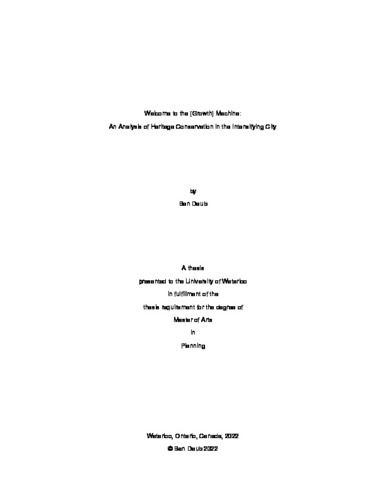| dc.description.abstract | As municipalities strive to meet urban intensification targets, developable and redevelopable land has become increasingly scarce. As a result, inter-urban space is consistently under pressure to accommodate new uses. Consequently, properties of built heritage significance can become targeted for such accommodations, via three main intervention types: adaptive reuse, façadism, and demolition. Increasing the complexity of intervention type usage is that heritage valuation is fluid and differs between all actors, adding a social component to decision-making processes. Using the City of Toronto as the case and employing a mixed-methods study design, I sought to address three main inquiries. First, I analyzed how often adaptive reuse, façadism, and demolition are employed, and how their uses correlate with urban intensification. Second, I examined how heritage professionals value heritage conservation, how their valuation has changed over time, and their observations towards how other heritage professionals’ valuations have changed over time. Third, I sought to determine how heritage valuation translates into the preference of different intervention types across differing intensification scenarios. Preliminary, archival analysis showed that the number of heritage intervention projects has increased alongside intensification and that façadism has emerged as the most used intervention type. Subsequent social analysis revealed that all heritage professionals value conservation and that many professionals have experienced some level of valuation change throughout their career. Additionally, data revealed that level of experience and professional role/affiliation within the heritage planning domain played the greatest role in determining intervention type preference. | en |

